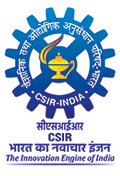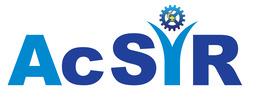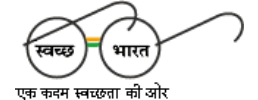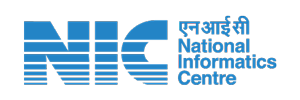Knowledege Resources
Print (up to 31st March 2021)
- More than 55,000 documents including text books, reference books, Hindi books, technical reports, manuals, conference proceedings, standards, theses, maps etc.
- Approximately 21,000 bound volumes of journals collection since 1950
- Full text reprints of research publications of S&T members of CSIR
- Collection of Annual Reports of CSIR labs.
Current Print Journals Subscription (2021)
Standards
- ASTM, BIS (CD), Indian Standards (CD)
E – Collection (online)
- Above 40, through NKRC/Direct subscription.
- Journals of all S&T Publishers like: Nature, Emerald, Elsevier, T&F, ACI
- Science database: Web of Science
Patents
-
Commercial:
- Derwent Innovations Index
- KCI – Korean Journal Database
- Russian Science Citation Index
- SciELO Citation Index
-
Open access:
- Patent Lens
- Google Patent Database
- Intellectual Property Library
Institutional Membership
- Indian:
- International:
Journal of Metallurgy and Materials Science (JMMS) publishes original articles, review reports and short communications in the areas of minerals, metals and materials tracing the overall life cycle of structural as well as functional materials. The journal lays special emphasis on fundamental sciences related to metallic materials and their applications.
The scope of JMMS may be enumerated as - Mineral processing, Extractive metallurgy: ferrous and non ferrous; Processing of metals, Advanced joining of metals, Mechanical behavior of materials, Materials failure mechanisms including Creep, Fatigue, Fracture and Corrosion, Characterization of materials, Non Destructive Techniques, Functional materials, Computational materials engineering, Metallurgical waste recycling and utilization of metallurgical and electronic wastes
The JMMS is a quarterly publication. In the year 20-21, the volume 62 having four issues were published in the following themes:
- Issue 1&2: Special issue on Specialized and Smart Coatings
- Issue 3&4: Special issue on Advanced Materials
CSIR Integrated Skill Training Initiative
CSIR-NML is implementing CSIR Integrated Skill Training Initiative since 2017.
The objectives of this program are
- To utilize CSIR knowledgebase and infrastructure for contributing to national skill mission
- To implement special up-skilling/training programs for societal benefits
- To implement identified skill/training programs of national skill mission
- To promote entrepreneurship/ technopreneurship in CSIR through skilling, Training of Trainers and Incubation facilities.
Training programs category
- Corporate Training Programme - (CTP)
- Professional Training Programme - (PTP)
- Societal Training Programme - (STP)
- International Training Programme - (ITP)
- NSDC Training Programme - (NTP)
- Other Training Programme - (OTP)
Target Groups
- Professionals for PTP & CTP. These are paid training.
- Unemployed youths for OTP, STP and NTP. These are Low cost/free training.
- School dropouts for STP and NTP. These are Low cost/free training.
- Training programs for women. These are Low cost/free training.
Development of contents for CSIR Virtual Laboratory
The project "CSIR Virtual Laboratory" aims to contribute in developing contents for encouraging students to learn science with fun by creating innovative learning tools through Virtual Laboratory (VL) utilizing advanced digital technology in the areas of minerals, metals, materials and metallurgy. Under this project, CSIR-NML will contribute by developing innovative contents for the VL focusing R&D activities of CSIR-NML. The CSIR-VL will be popularized among the students through various publicity modes (print, digital, social media, road show, etc). For improving the content of the CSIR VL, feedback from students and faculty members will be obtained through focused group discussions and by conducting brain storming sessions. It is planned to organize competition among students for making innovative tools/devices based on scientific concepts. In addition, the CSIR-VL interface will be utilized to upload "2-Minutes-Talk" by women scientists to encourage girl students to taking up science for their future career options.
RTI Statistics
Information under Right to Information Act
During the reporting period, the CSIR-NML has received a total 72 RTI applications and 6 appeals were successfully disposed of as per RTI guidelines. Further one appeal was received from the Central Information Commissioner (CIC), New Delhi for hearing. The decision of CIC was in favor of CSIR-NML and case was resolved. The RTI applications, emanated from seventeen states of India. Since November, 2016, the CSIR-NML has switched over to the online mode for the transaction of the RTI application through the “RTI Request and Appeal Management Information System” (RTI-MIS) portal. Additionally, a good number of RTI applications were also received physically
PG Portal Statistics

Scientists-Science Teachers Conclave
Information under Right to Information Act
Scientists Science Teacher Conclave (SSTC) was organized by CSIR- National Metallurgical Laboratory under the aegis of CSIR Skill Initiative. This training was conducted in 4 phases. The objective of the programme is to provide various innovative teaching techniques to science teachers, which they can incorporate in their teaching methods to make science more interesting and understandable to students. The interaction between scientists and science teachers develops interesting ways of understanding science subjects. These ways will be further used for teaching science to the students. The attendees for this training programme were science teachers from various schools and colleges all over India. In the 1st phase of the training, CSIR-NML scientists took lectures on visualizing maths, physics, and chemistry and interacted with the science teachers. In the 2nd phase of the training programme, a session on “origami to understand 3D crystallography structures” was conducted. Here, the scientists focused on the demonstration of making the cubic, orthorhombic, and tetragonal crystal structures. The unit cell planes were demonstrated using different colour papers.
Additionally, the plastic spherical balls were used to show the relationship between the radius of atom and edge length, coordination number, and rank of a cubic unit cell. In the 3rd phase of the training programme, demonstration on the understanding of crystal structure was further extended. The tetragonal and octahedral voids in the cubic structure were demonstrated using the origami technique. Further, we showed the hexagonal crystal. In the 4th phase of the training programme, we showed different physics concepts such as Newton’s law, air pressure, sound wave, etc. through visualizing and origami methods. Additionally, a lecture session on the identification of crystal structure using the X-ray technique was conducted. We also demonstrated how to make solenoid using e-waste and other waste materials to give concept of electromagnetic interactions.

CSIR Model village
Under the CSIR Integrated Skill Initiative, CSIR-NML has started working on the project “Model Village” through which entrepreneurial skills will be offered to the villagers. The idea of the model village project was suggested by the CSR committee constituted by the DG, CSIR. The objective of this project is to develop a model village using CSIR technologies and innovations and to obtain CSR funding from corporates. The team of CSIR-NML selected Kedo village, which is located in Hitku panchayat, Golmuri-Jugsalai block, East Singhbhum district, Jharkhand. The team visited the Kedo village and had a meeting with the villagers. The villagers raised many concerns. They do not have clean drinking water. CSIR-NML conducted the test to check the level of Iron (Fe). The level of Fe content is beyond the permissible limit, which gives rise to various health issues like gastrointestinal problems, joint pain, abdominal pain, allergies, etc. It was planned to offer training to the villagers on how to make simple water filters for removing iron. Moreover, the villagers do not have the facility to circulate the water in the agriculture field due to poor connectivity of electricity, which affects their farming significantly.
CSIR-NML team discussed the issues and suggested various facilities such as water filters, solar pumps, and tool room. The tool room will have many agricultural tools including hand tractor, paddy cleaner fan, paddy thresher, electrical toolkit, grass cutter, paddy cutting machine, solar dryer, grinding machine etc. which can be used by the villagers for agricultural work.







